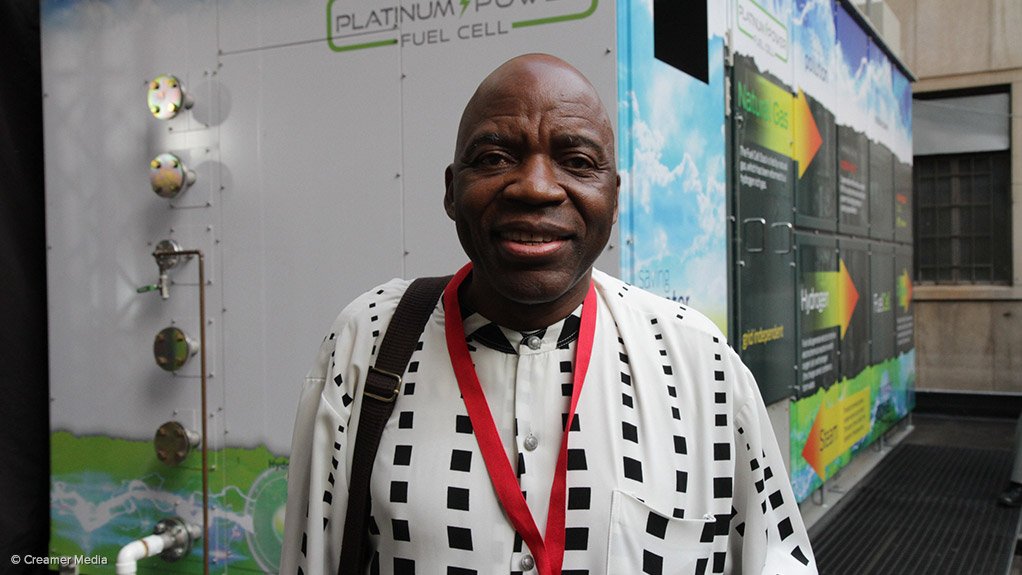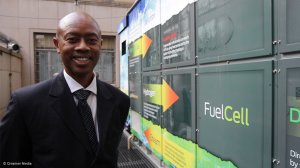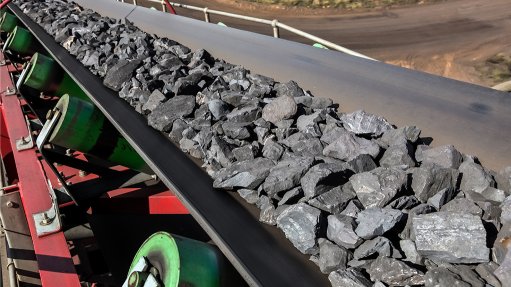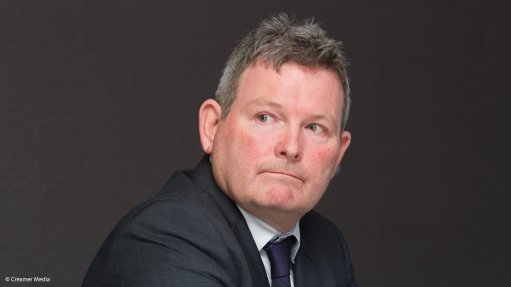Power problems offering platinum huge demand opportunity


Creamer Media’s Mining Weekly records the views on platinum fuel cells as energy providers at the unveiling of Africa’s first 100 kW fuel cell by Trade and Industry Minister Rob Davies at the Chamber of Mines building in Johannesburg. Photographs: Duane Daws. Video: Nicholas Boyd. Video Editing: Lionel da Silva.
Mashudu Ramano
Photo by Duane Daws
JOHANNESBURG (miningweekly.com) – The electricity crisis is offering South Africa’s demand-hungry platinum mining companies a major opportunity to stimulate the offtake of platinum.
State power utility Eskom’s loadshedding programme is elevating power-generating fuel cell technology - with platinum at its heart - to a new pinnacle, as evidenced this week when the Chamber of Mines (CoM) unveiled its own 100 kW installation.
The baseload fuel cell installation demonstrates that platinum fuel cells are not only efficient, versatile and scaleable, but also represent a proven technology that ensures clean, reliable, noiseless and cost-effective power.
A host of top-level local and global speakers used the unveiling of the chamber’s baseload fuel cell, which will provide the building in central Johannesburg with all the electricity it needs at a 20% discount over the next 15 years, spoke convincingly of the window of opportunity being opened to its widest point ever for South Africa to create new jobs and decentralised electricity.
Further, the country stands to benefit from a much-needed boost for platinum mining.
Speakers ranging from CoM COO Roger Baxter and Japanese Ambassador Shigeyuki Hiroki to Trade and Industry Minister Rob Davies, Industrial Development Corporation (IDC) CEO Geoffrey Qhena and Impala Platinum CEO Terence Goodlace drew attention to the absolutely essential need for platinum to have strong ongoing marketing thrust, owing to the precious metal being used but never consumed.
Subsequently, the platinum re-enters the market as recycled metal, which is suppressing the price and is detrimental to new mining development.
This trend needs to be reversed to provide scope for mined metal.
“We want to demonstrate that this fuel cell is more cost competitive in the long term than getting power from the grid,” Baxter said at the unveiling.
Mitochondria Energy CEO Mashudu Ramano emphasised the importance of the showcasing amid the new trend of decentralised power sweeping the world, in potentially the same way as the desktop computer replaced large centralised computer systems.
Department of Trade and Industry (DTI) chief director infrastructure investment support Kaya Ngqaka told Creamer Media’s Mining Weekly Online in the attached video – which can be accessed by clicking on the play button on the picture – that about R7.5-million was provided by DTI for the 100 kW chamber fuel cell to showcase to the world that platinum-using fuel cells are amazing providers of low-maintenance electricity.
Ngqaka said the DTI planned to create a special economic zone (SEZ), which fed into the concept of having a Silicon Valley-type Platinum Valley SEZ to boost the use of platinum and take South Africa up the value chain into a new local industry.
He outlined to Mining Weekly Online (see attached video) that the basic intention of the DTI was to industrialise the country.
“This kind of electricity from fuel cells is there to drive industrialisation through the beneficiation of platinum, which is a very important catalyst. This initiative will also feed into the much-anticipated Platinum Valley,” Ngqaka added.
ELIMINATING SMELTING
Dovetailing with the fuel cell demonstration is the target date of JSE-listed Pallinghurst’s IDC-supported Sedibelo platinum mine to proceed with the commercial implementation of a paradigm shift technology that will mine and refine platinum in an integrated on-site process and use only one-tenth of the electricity normally consumed.
Major detail design work has been completed on the Kell process, which unlocks significant capital by enabling an operation to go from mining to finished refined metal in only a week.
Recovery of 99.9% of platinum group metals (PGMs) is already being achieved in a scaled-up pilot plant at the Sedibelo mine. The patented technology that former Mintek researcher Keith Liddell has been developing for a decade-and-a-half is expected to be the catalyst that provides the potential for a Platinum Valley, which is strongly supported by the large near-mine shareholder community, as well as Sedibelo’s sovereign Dutch, Singaporean and South African IDC shareholders.
“It’s truly an exciting story that has all the hallmarks of being a much-needed game changer for the industry,” said Pallinghurst CEO Arne Frandsen, who spoke to Creamer Media’s Mining Weekly Online in a global conference call during which Liddell outlined that a commercial PGMs plant would have been operating already had far larger industry demand not dictated the need for a much larger plant to accommodate third-party processing beyond PGMs alone.
“There’s no reason why South Africa cannot become a major producer of fuel cell power generators using the platinum that we have in such abundance in our country as the catalyst,” Davies said.
“It’s cutting-edge technology and it could be used to provide power in outlying areas and reduce pressure on the grid. This is a potential win-win for all of us,” the Minister added.
“We’re an energy hungry country and we need to invest in our energy future,” CoM president Mike Teke commented.
“Individuals worldwide have said to us that if South Africa can give us the demand, we’ll locate here,” Ramano added.
“Fuel cells provide stable energy provision,” said Mitochondria CEO Anthea Bath.
The modular units provide energy at the point of use, reducing losses, and they are expected to penetrate not only the South African market but also the African market.
“Fuel cells are beginning to see a very interesting business proposition. They reduce costs from the outset and also enable energy security at effective energy costing,” Bath added.
The UK’s Carbon Trust has found that fuel cells have the potential to drive development of a new industrial sector in South Africa and provide the country with the opportunity to become a major player in the global green economy.
The trust said there would also be clear potential to transfer knowledge and products to the global market.
Implats is planning an initial 1.8 MW of stationary fuel power capacity at the company’s platinum refinery, which will later be boosted by up to 22 MW to enable the refinery to operate independently of the national electricity grid.
The call is out for South Africa to commit to 1 000 MW of fuel cell electrical capacity, which would require 5% more platinum metal.
Global car manufacturers are also launching cars powered by fuel cells with calculations showing that if 1% of cars use fuel cells this will translate into a 20% increase in demand for platinum.
The CoM fuel cell operates continuously in parallel with the national electricty grid and provides critical back up if the grid fails.
“We don’t do business if it’s not based on economic benefit. Where it does not make economic sense, we don’t get involved,” Bath assured Mining Weekly Online.
Mitochondria works with Fuji Electric of Japan in driving the technology.
The laptop-sized 5 kW fuel-cell system was used to power the sound and projectors at this week’s unveiling event at the chamber was an indication of the wide range of applications of fuel cells.
For some time now, mining company Anglo American Platinum has fuel-cell powered mine locomotives at its Dishaba operation and the company also has a fully off-grid power system sufficient for lighting, cooking, refrigeration, radio and television under field trial in Kroonstad, the the Free State.
There are many fuel-celled buses in North America, and fuel-celled forklift trucks went commercial some time ago in the US, replacing battery units.
MINOR PGMS
Although the markets for the minor PGMs like ruthenium and iridium are small, they tend to be financially liquid and have major lifestyle implications for laptops, iPads and spark plugs.
Iridium’s unique selling points are its high corrosion resistance and high melting point, which is particularly critical in crucibles, with 200 000 t of South African platinum ore having to be extracted and processed to supply one crucible set.
The light-emitting diode (LED) industry has been investing heavily in iridium crucibles, which are used for the growing of crystals for a range of high-technology applications, including sapphire for LEDs, lithium materials, acoustic wave filters in mobile phones and components in medical scanners.
This is the consequence of a rapid technology shift in which LED television sets with backlighting accounts for three-quarters of the television market.
Ruthenium plays a role in electronic chip resisters, coating, specialised alloys, speciality machine tools and the aerospace industry, and can take much of the credit for the 100-fold increase in computer storage capacity that has taken place in a single decade.
Virtually all the ruthenium is South African, dictated largely by the volume of platinum mined.
A new application for iridium is as a light emitter in organic LEDs known as OLEDs. Some smartphones have OLED displays, which are crisper, quicker and consume less electricity.
The television market is poised to require a far larger OLEDa and considerably more iridium.
However, the major use is still in the traditional autocatalysis market, where vehicle emission standards in Europe and China are increasing demand for platinum.
High emission standards are being enforced for heavy-duty vehicles and passenger cars in Europe and tighter emission levels are being implemented in China for diesel vehicles.
The new European standards have high nitrogen oxide (NOx) limits for diesel vehicles, forcing the application of new catalysts on diesel cars.
While some catalysts are basemetal catalysts, most controlling NOx are platinum and rhodium based.
The future of PGMs is thus assured but what is needed now is commitment to ongoing marketing in general and fuel cell promotion in particular to ensure the ongoing demand for mined PGMs.
Comments
Press Office
Announcements
What's On
Subscribe to improve your user experience...
Option 1 (equivalent of R125 a month):
Receive a weekly copy of Creamer Media's Engineering News & Mining Weekly magazine
(print copy for those in South Africa and e-magazine for those outside of South Africa)
Receive daily email newsletters
Access to full search results
Access archive of magazine back copies
Access to Projects in Progress
Access to ONE Research Report of your choice in PDF format
Option 2 (equivalent of R375 a month):
All benefits from Option 1
PLUS
Access to Creamer Media's Research Channel Africa for ALL Research Reports, in PDF format, on various industrial and mining sectors
including Electricity; Water; Energy Transition; Hydrogen; Roads, Rail and Ports; Coal; Gold; Platinum; Battery Metals; etc.
Already a subscriber?
Forgotten your password?
Receive weekly copy of Creamer Media's Engineering News & Mining Weekly magazine (print copy for those in South Africa and e-magazine for those outside of South Africa)
➕
Recieve daily email newsletters
➕
Access to full search results
➕
Access archive of magazine back copies
➕
Access to Projects in Progress
➕
Access to ONE Research Report of your choice in PDF format
RESEARCH CHANNEL AFRICA
R4500 (equivalent of R375 a month)
SUBSCRIBEAll benefits from Option 1
➕
Access to Creamer Media's Research Channel Africa for ALL Research Reports on various industrial and mining sectors, in PDF format, including on:
Electricity
➕
Water
➕
Energy Transition
➕
Hydrogen
➕
Roads, Rail and Ports
➕
Coal
➕
Gold
➕
Platinum
➕
Battery Metals
➕
etc.
Receive all benefits from Option 1 or Option 2 delivered to numerous people at your company
➕
Multiple User names and Passwords for simultaneous log-ins
➕
Intranet integration access to all in your organisation




















